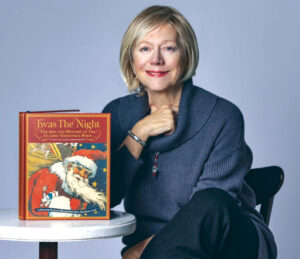First Impressions column by Caspar Ewig
‘A Visit from St. Nicholas’ Classic
Christmas Poem Deconstructed

COOPERSTOWN - On Tuesday, November 29, author Pamela McColl presented at Fenimore Art Museum on the insights and experiences she had gained in the 10 years it took to research and write her volume, “Twas the Night—The Art and History Behind the Classic Christmas Poem.” The lecture was particularly relevant this year, since it is the bicentennial of the poem’s first reading and since part of the imagery contained in it parallels imagery James Fenimore Cooper incorporated into his work, “The Pioneers,” published about the same time.
You have reached your limit of 3 free articles
To Continue Reading
Our hard-copy and online publications cover the news of Otsego County by putting the community back into the newspaper. We are funded entirely by advertising and subscriptions. With your support, we continue to offer local, independent reporting that is not influenced by commercial or political ties.

